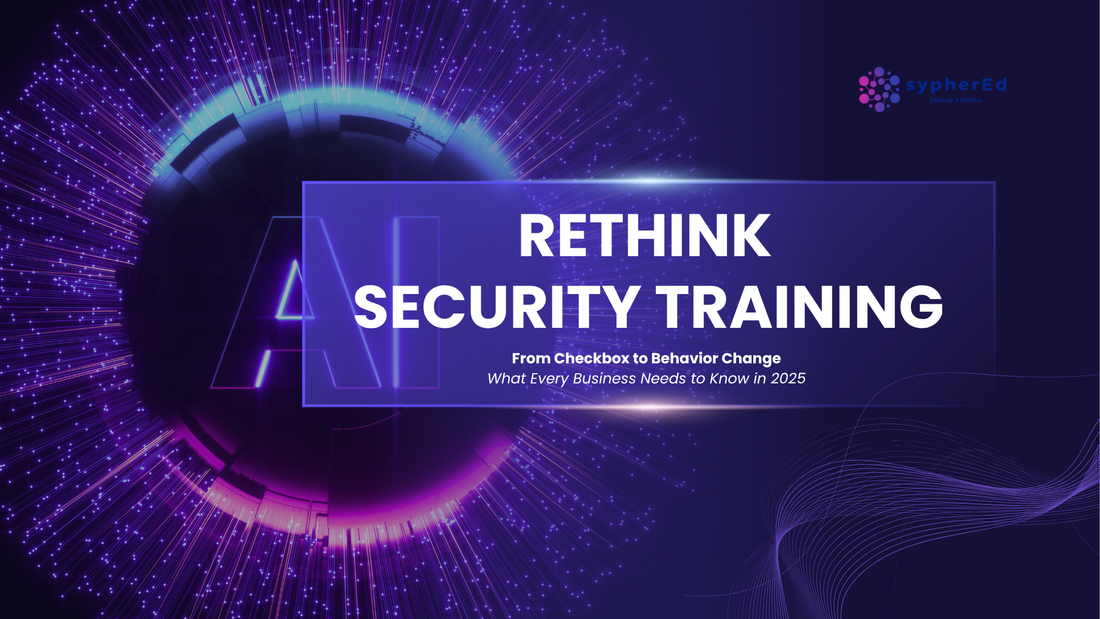Security awareness training has become a checkbox in most organizations. Once a year, employees click through a presentation or quiz. Maybe they watch a few outdated videos about phishing or weak passwords. And then its back to business as usual.
But here’s the problem: cyber threats have evolved—and our training hasn’t.
In today’s digital-first, hybrid-work world, human error is still the leading cause of security breaches. And yet, many organizations continue to rely on outdated, one-size-fits-all training that doesn’t change behavior or reduce risk in any measurable way.
So what does effective security awareness training actually look like in 2025? Let’s break it down.
Why Traditional Training Fails
-
Low Engagement
Let’s face it—most employees find security training boring. Long lectures, irrelevant examples, and a lack of interactivity lead to disengagement. And when people aren’t engaged, they don’t learn. -
No Real-World Application
Phishing attempts don’t come with red flags and warning labels. Employees need to be trained to recognize suspicious behavior in realistic, everyday scenarios. Traditional modules rarely simulate the nuance of real attacks. -
No Metrics That Matter
Completion rates and quiz scores don’t equate to a safer company. If your training doesn’t lead to fewer incidents, lower click-through rates on phishing simulations, or more proactive reporting from employees—what’s the point? -
Forgettable Content
When employees go through training once a year, they forget what they learned within weeks (if not days). Without reinforcement or repetition, it’s impossible to build lasting habits.
What Effective Security Awareness Training Looks Like
To actually reduce cyber risk, training needs to shift from passive learning to active behavioral change. Here's what works:
1. Simulation-Based Learning
The most effective programs simulate real-life cyber threats—phishing emails, social engineering attempts, smishing (SMS phishing), and more. Employees learn not just what could happen, but how it actually feels when it does.
Simulations can be customized to mimic common threats based on the employee’s role or department. For example, finance teams may receive fake vendor invoices, while HR may get fraudulent job application links. This builds muscle memory and awareness.
2. Behavior-Driven, Not Box-Ticking
The best training platforms use behavioral science to drive habits. Instead of memorizing facts, employees are encouraged to think critically and recognize patterns. This creates smarter, more adaptable security instincts.
Reinforcement over time is key—short, frequent micro-lessons are far more effective than once-a-year refreshers. Behavior sticks when people are consistently reminded and tested in creative ways.
3. Gamification and Interactivity
People learn better when they’re engaged—and gamification helps. Training that uses points, leaderboards, or short missions boosts participation and makes security part of daily culture. It’s not about turning work into a video game—it’s about making the learning process enjoyable and memorable.
4. Actionable Metrics
Good security awareness programs don’t just tell you who completed the training.
Why It Matters Now More Than Ever
The average cost of a data breach in 2024 was $4.9 million USD, according to IBM. And in at least 74% of those breaches, human error played a key role. In other words, your employees are both your biggest risk—and your greatest line of defense.
But they need the right training.
One that’s:
- Engaging
- Realistic
- Behavior-focused
- Ongoing
- Backed by metrics
It’s time to stop checking the box and start building a human firewall that actually works.
Final Thought
Cybersecurity isn’t just a technology problem—it’s a people problem. And people can’t protect what they haven’t been taught to recognize. If your security awareness program hasn’t changed in the last few years, it’s time to ask: is it truly protecting your business?
Looking for a Better Way to Train Your Team?
If you’re ready to move beyond checkbox training and start building a real human firewall, we can help. Reach out to Syphered to explore simulation-based, behavior-driven training solutions that actually stick. Let’s build a safer future—together.

